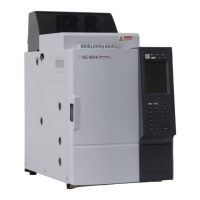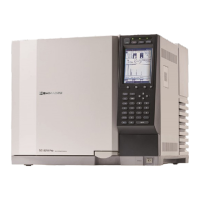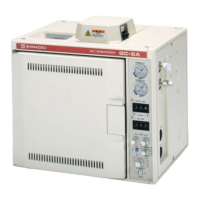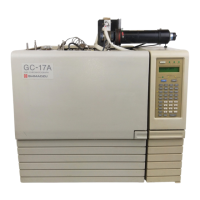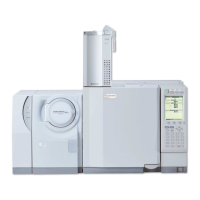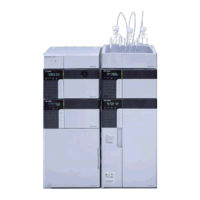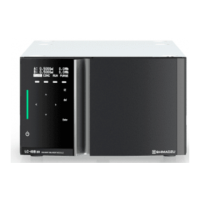13 Detector
13.2
13.
164
GC-2014
13.2Thermal Conductivity Detector (TCD)
13.2.1 Principle of TCD operation
The thermal conductivity detector (TCD) can detect all compounds except the carrier gas
itself.
The metallic TCD filament is heated by the application of current. The carrier gas used has a
high thermal conductivity, such as helium. As sample compounds pass the filament, the fila-
ment temperature increases, because the thermal conductivity of the sample compounds is
less than that of the carrier gas. The filament temperature changes affect its resistance; the
resistance is measured and produces a chromatogram.
A reference filament also exists, where only carrier gas flows, to eliminate background resis-
tance fluctions.
Fig. 13.2.1
The TCD sensitivity is proportional to the difference in thermal conductivity between the
sample and the carrier gas. Because the thermal conductivity of the sample is lower than
that of the carrier gas, the TCD sensitivity increases as the thermal conductivity of the carrier
gas increases.
For high sensitivity analysis, use helium with a purity of 99.9995 % or more.
Thermal conductivity k (x10
-4
Wm
-1
K
-1
) at room temperature, 300 K
Gas
Thermal
conductivity
Gas
Thermal
conductivity
Simple
compounds
He 1499
Inorganic
compounds
CO
2 166.2
H
2 1815 H2O 181
N
2 259.8
Organic
compounds
acetone 115
Ar 177.2 hexane 128
Reference gas
TCD cell
Filament
Output signal
Carrier gas
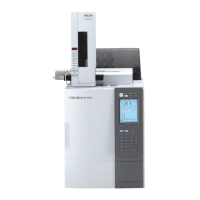
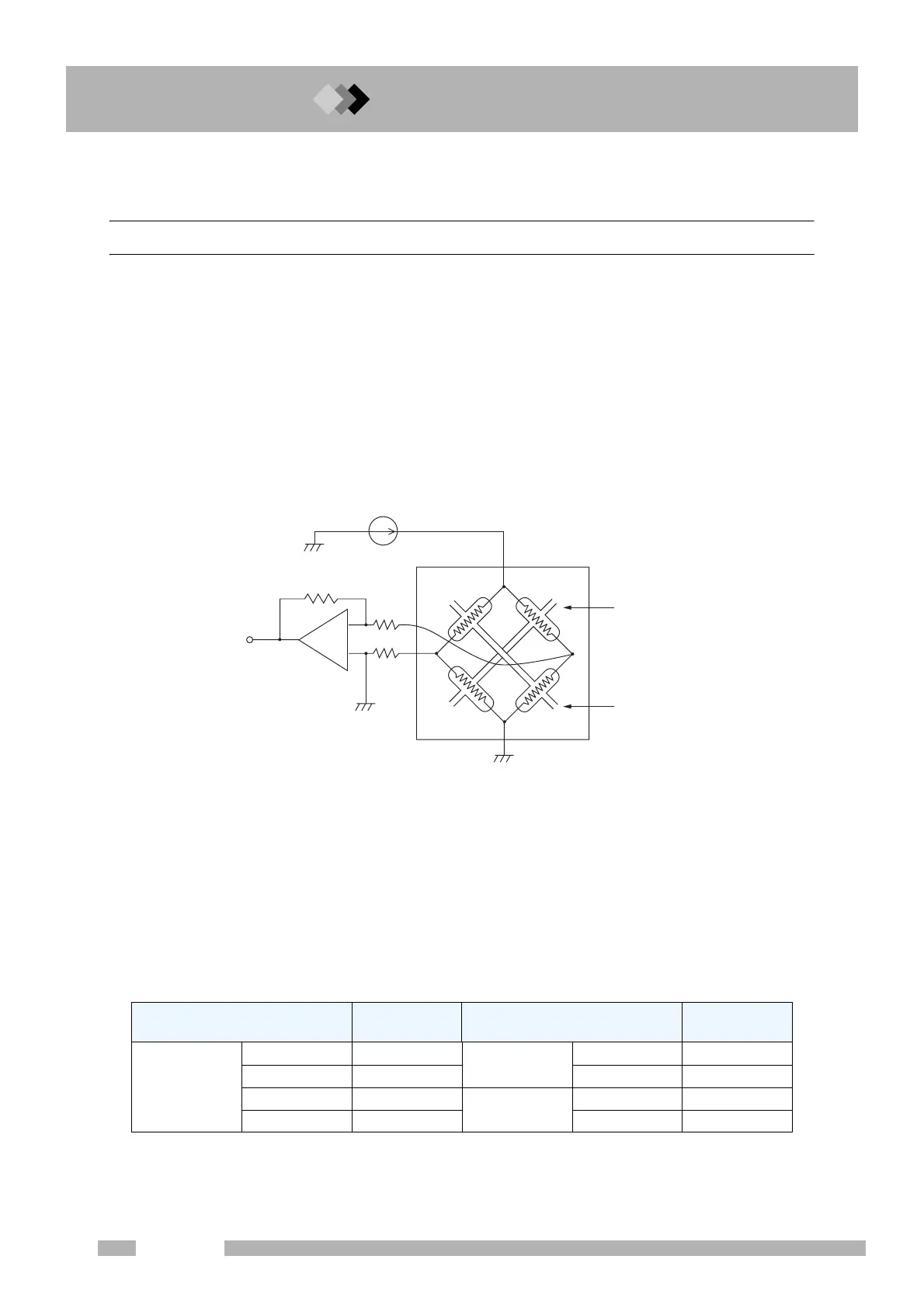